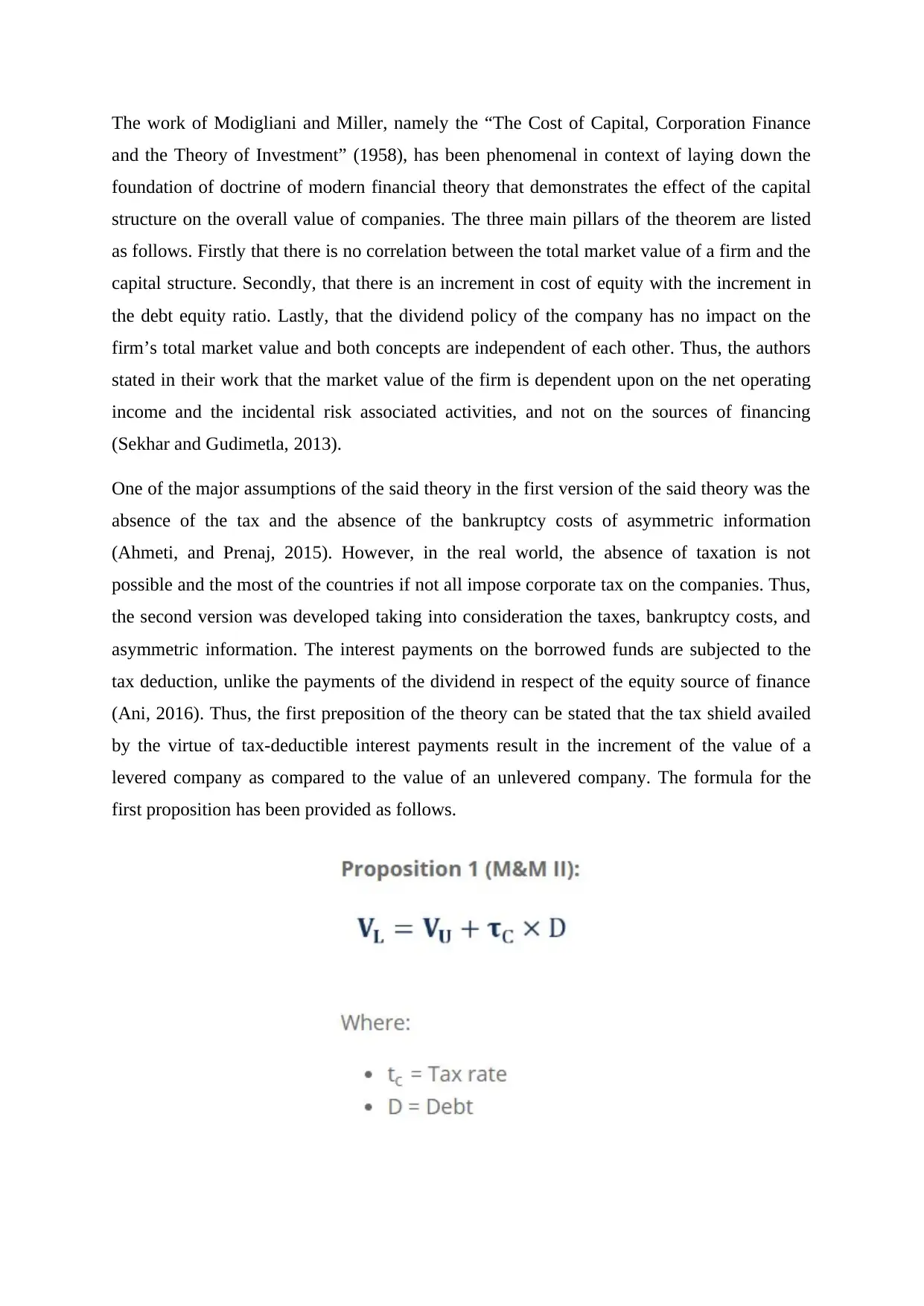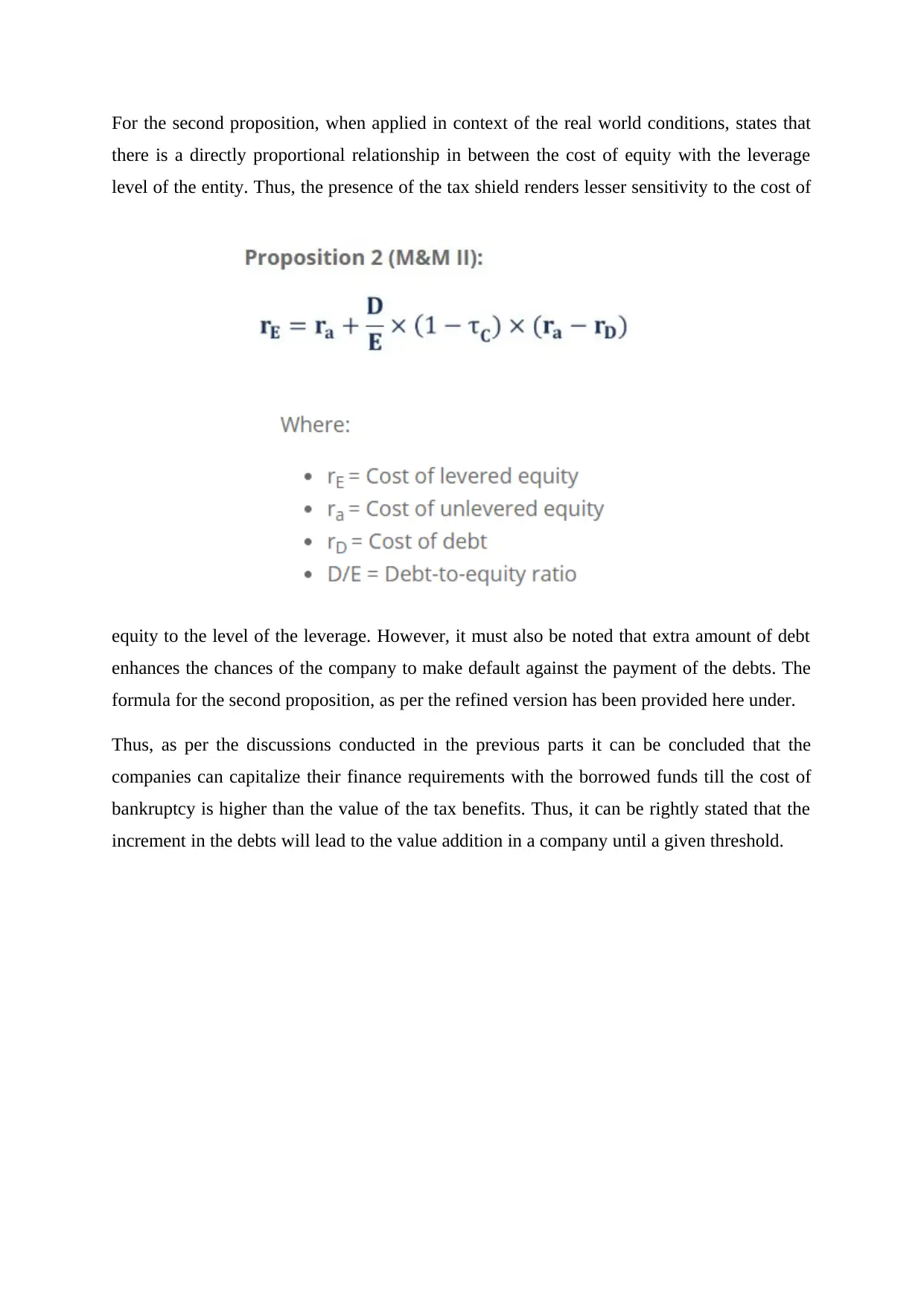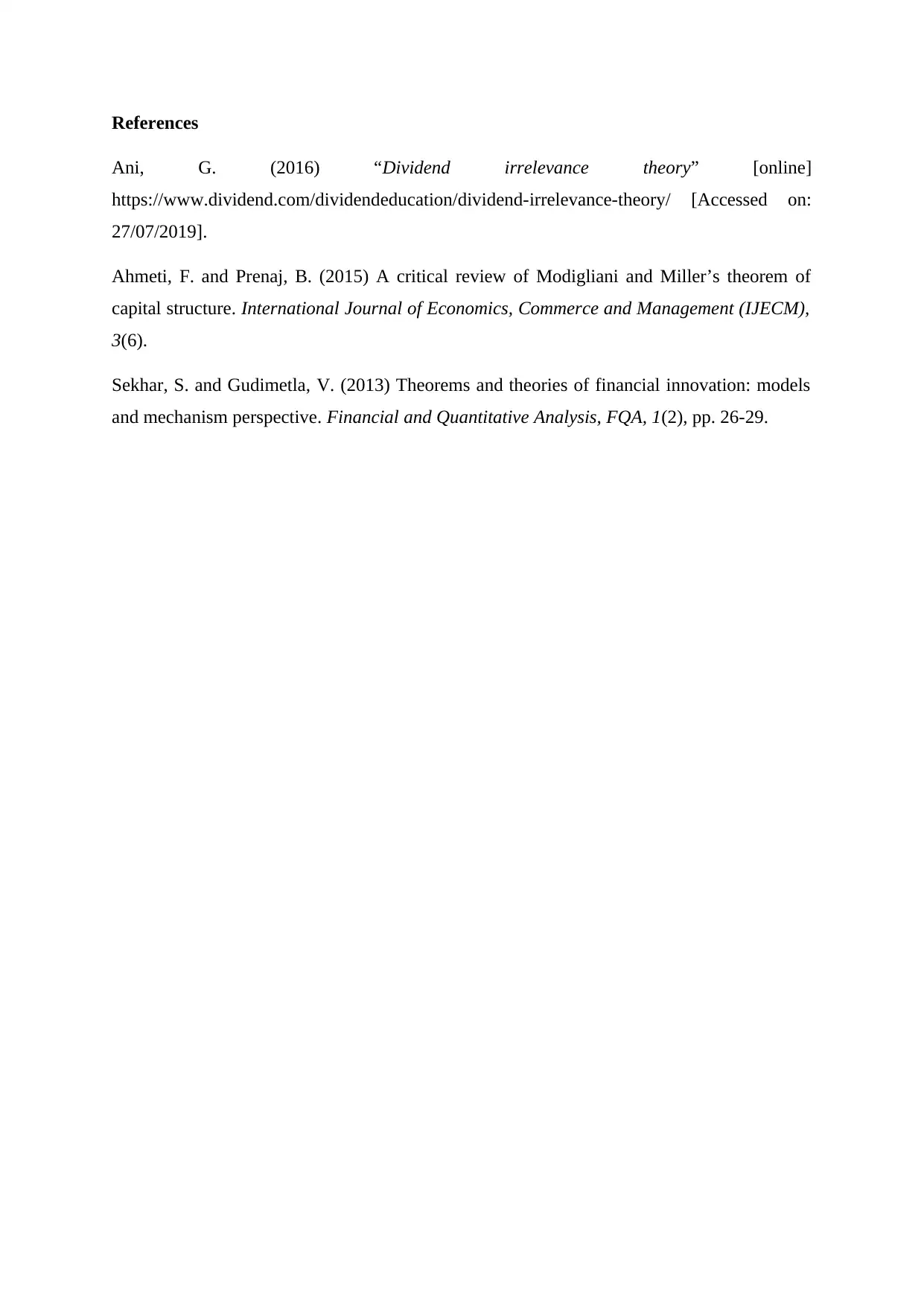Modigliani and Miller's Theorem of Capital Structure in Corporate Finance
VerifiedAdded on 2022/10/19
|4
|647
|72
AI Summary
This article discusses Modigliani and Miller's Theorem of Capital Structure in Corporate Finance. It explains the three main pillars of the theorem and how it affects the overall value of companies. The article also discusses the assumptions made in the first version of the theory and how the second version takes into consideration taxes, bankruptcy costs, and asymmetric information.
Contribute Materials
Your contribution can guide someone’s learning journey. Share your
documents today.
1 out of 4










![[object Object]](/_next/static/media/star-bottom.7253800d.svg)